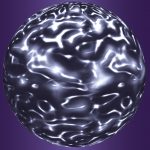Link to Pubmed [PMID] – 32386456
Link to DOI – 10.1002/JLB.4AB0420-694R
J Leukoc Biol 2020 11; 108(5): 1655-1663
Infection with seasonal as well as highly pathogenic avian influenza A virus (IAV) causes significant morbidity and mortality worldwide. As a major virulence factor, PB1-F2 protein of IAV affects the severity of disease through multiple mechanisms including perturbation of host innate immune response. Macrophages are known to phagocytose extracellular PB1-F2 protein aggregate, leading to hyperactivation of NLRP3 inflammasome and excessive production of IL-1β and IL-18. On the other hand, when expressed intracellularly PB1-F2 suppresses NLRP3 inflammasome maturation. How extracellular and intracellular PB1-F2 orchestrates to drive viral pathogenesis remains unclear. In this study, we demonstrated the suppression of NLRP3 inflammasome activation and IL-1β secretion by PB1-F2 of highly pathogenic influenza A (H7N9) virus in infected human monocyte-derived macrophages. Mechanistically, H7N9 PB1-F2 selectively mitigated RNA-induced NLRP3 inflammasome activation by inhibiting the interaction between NLRP3 and MAVS. Intracellular PB1-F2 of H7N9 virus did not affect extracellular PB1-F2-induced NLRP3 inflammasome maturation. In contrast, PB1-F2 of WSN laboratory strain of human IAV effectively suppressed IL-1β processing and secretion induced by various stimuli including NLRP3, AIM2, and pro-IL-1β. This subtype-specific effect of PB1-F2 on inflammasome activation correlates with the induction of a proinflammatory cytokine storm by H7N9 but not WSN virus. Our findings on selective suppression of MAVS-dependent activation of NLRP3 inflammasome by H7N9 PB1-F2 have implications in viral pathogenesis and antiviral development.
